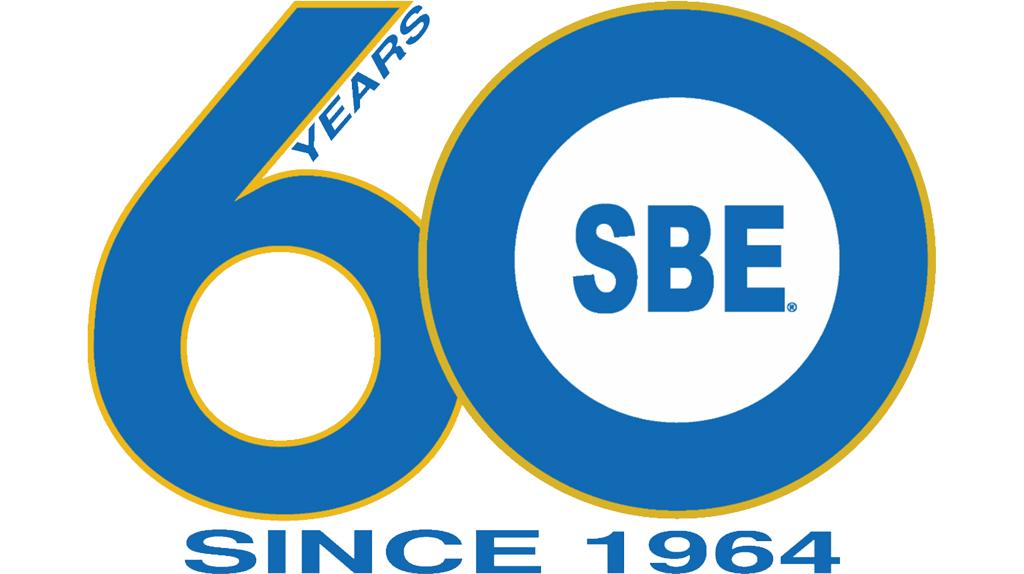SBE Adds New Certification: Certified Production Technologist
New CPT program has two tracks, audio or video

The Society of Broadcast Engineers said it has added a new credential to its program of certification, Certified Production Technologist.
As part of the launch of the CPT certification, the SBE laid out how the new program is part of its larger training effort. While the Core Four levels (CBT, CBRE/CBTE, CSRE/CSTE, CPBE) are the foundation of the SBE certification, which launched in 1975, advances in technology have spurred the need for other relevant skills to be evaluated, SPE said.
Examples of this include Certified Broadcast Networking Technologist (2001) and Certified Broadcast Networking Engineer (2012), the specialist certifications (8-VSB, AMD, ATSC3 and DRB), and the Certified Audio Engineer (CEA) and Certified Video Engineer (CEV) certifications.
The CEA and CEV were created for professionals who perform the same functions as a CBRE or CBTE but aren’t involved in RF or regulatory issues. This includes production personnel with radio and TV broadcast facilities, but also those who work in production houses and live venues, as well as employees of streaming services. Candidates for Certified Audio Engineer (CEA) or Certified Video Engineer (CEV) must have five years of suitable experience in audio/video engineering or related technology. The Audio/Video Engineer multiple choice examination consists of questions on operating practices, problems, theory, safety and basic electronics.
“While the CEA/CEV are established in the industry, being created more than 20 years ago, it was realized that an entry-level certification covering the same skills, but without the career service requirement, was needed, especially with the proliferation of streaming services and increase in media facilities not directly involved in broadcast distribution,” SBE Certification Committee chair Ralph Hogan, CPBE, ATSC3, DRB, CBNE said. “Like the CEA and CEV, there are no RF or FCC questions on the exam.”
The group also explained that Certified Broadcast Technologist (CBT) is actually two separate certifications that use the same name. The CBT exam can focus on radio or television.
The new Certified Production Technologist (CPT) program does the same. It will be identified with one name, but has two tracks: audio or video. Again, no experience is required as it is an entry-level certification.
Get the TV Tech Newsletter
The professional video industry's #1 source for news, trends and product and tech information. Sign up below.
The SBE reported that the CPT exam is to be administered like other SBE certification exams. The exam will consist of 50 multiple-choice questions. It will be open-book, with personal notes and internet access allowed. It’s important to know the technology, but just as important to know where to find a solution when it’s needed, SPE said. To pass the exam, an individual must correctly answer at least 70% (35 total) of the questions.
The exam question pool is being finalized, and in time, a CertPreview sample test will be available. Apply to take the CPT through the SBE website. Find the applications under the Certification tab.
The Society of Broadcast Engineers is the professional organization for television and radio engineers and those in related fields. The SBE has more than 4,500 members in 115 chapters across the U.S. and in Hong Kong and Eastern Europe. There are also members in more than 25 other countries.
George Winslow is the senior content producer for TV Tech. He has written about the television, media and technology industries for nearly 30 years for such publications as Broadcasting & Cable, Multichannel News and TV Tech. Over the years, he has edited a number of magazines, including Multichannel News International and World Screen, and moderated panels at such major industry events as NAB and MIP TV. He has published two books and dozens of encyclopedia articles on such subjects as the media, New York City history and economics.

